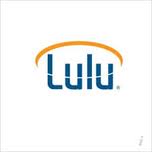A recent report by the Center on Education Policy entitled Is NCLB Narrowing the Curriculum? notes that since the passage of the NCLB, 71 percent of the nation’s 15,000 school districts have reduced the hours of instructional time spent on history, music and other subjects to make more time for reading/language arts and/or math. Twenty-seven percent of the districts reported reduced instructional time in social studies. Twenty-two reported cuts in science and twenty percent reported similar cuts in art /music. I guess the thinking is – if a subject is not tested, why teach it? Or perhaps they think that reading, writing and ‘rithmetic can only happen in English or math class.
Of course these shifts in instruction fall most heavily on low performing students. As if being a struggling learner is not punishment enough, increasing numbers are pulled out of classes that offer hands-on learning and outlets for their creativity. What awaits them is likely “drill and kill’ that doesn’t sound like much fun for students or their teachers. Daily reading, writing and application of math should be common to every class. Let music students explore the mathematical elements of rhythm and then journal what they had learned.
Educational decision makers haven’t got the news that new technologies have spawned an explosion in creativity that could be harnessed to engage and support learners. They could take a lesson from the folks in Hollywood who are using innovative techniques to shore up the declining youth film audience. New Line Cinema is tapping into the creativity of their audience to promote their new film “Take the Lead” starring Antonio Banderas as a professional dancer who volunteers to teach NYC school kids all the moves.
The Take the Lead website includes a do-it-yourself music video maker. The viewer gets to select from a variety of images and sound styles and create their own movie trailer. They can enter it to win free stuff – like iPods. More importantly to the filmmakers – viewers can email their digital “mash-up” to friends to show off their emerging skills a music video auteur. Viral marketing at work.
Smothering struggling readers with remedial classes isn’t the answer. Instead educators might want to talk with designers of the “Take the Lead” music video maker. They said, “the goal is to encourage consumers to make a proactive decision to engage with the content… You can’t force-feed younger movie goers with traditional top down advertising…it’s all about giving these kids our trailers, our songs and letting them take control… our assets become their assets and that’s how they become fans of the movie.” Going Unconventional to Market Movies, NY Times 4.6.06
Glad to see that someone knows that engagement beats drill and kill.
For an update on this theme click here.


